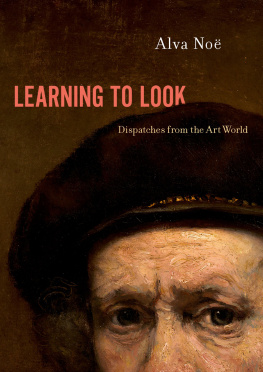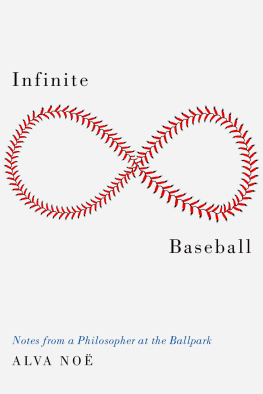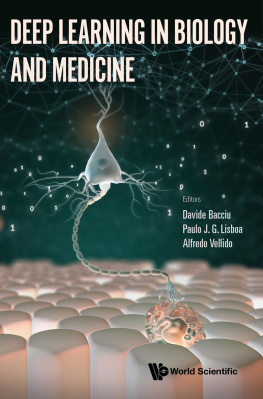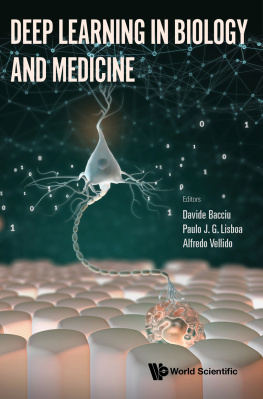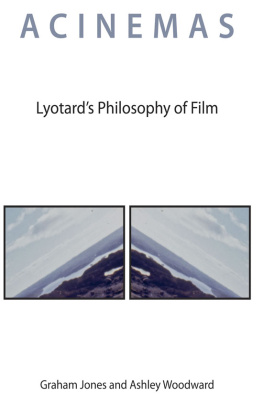Learning to Look

Oxford University Press is a department of the University of Oxford. It furthers the Universitys objective of excellence in research, scholarship, and education by publishing worldwide. Oxford is a registered trade mark of Oxford University Press in the UK and certain other countries.
Published in the United States of America by Oxford University Press
198 Madison Avenue, New York, NY 10016, United States of America.
Oxford University Press 2021
All rights reserved. No part of this publication may be reproduced, stored in a retrieval system, or transmitted, in any form or by any means, without the prior permission in writing of Oxford University Press, or as expressly permitted by law, by license, or under terms agreed with the appropriate reproduction rights organization. Inquiries concerning reproduction outside the scope of the above should be sent to the Rights Department, Oxford University Press, at the address above.
You must not circulate this work in any other form and you must impose this same condition on any acquirer.
Library of Congress Control Number: 2021013673
ISBN 978-0-19-092821-6
eISBN 978-0-19-092823-0
DOI: 10.1093/oso/9780190928216.001.0001
For Nicole
Contents
Works of art sometimes leave us speechless. But they almost never shut us up. They cant. Theres just too much to say. Talking about art doesnt leave things as they are; it changes everything. To look, to think, to say what you see or why you respond as you dothis changes what you see, and it changes your response. The effort and the caring remake us. They remake us in real time as we listen to the song, or examine the painting, or watch the movie.
This is not unique to art, of course. What I have just outlined goes for all experience and is really lifes first principle: life is a process of growth and reorganization, a process that commences right when we first act, for we reorganize ourselves and develop in response to the ways what we do changes what we undergo, as Dewey might have said.
But art aims at this; there is art so that we may remake ourselves, and also so that we may catch ourselves in the act of this remaking. Art requires creation, even from its beholder.
Yogi Berra was right: you can see a lot by observing. But observationthe effort and the caringrequires thought, attention, focus. It can be play, but it is also work. Art always proposes a task, and the task is neither easy nor quite well enough defined. It is this: to try to perceive, to bring what is there into focus. If you do this, you will find yourself unveiled and, to whatever little extent, put together anew.
The crucial thing to accept is that we dont get all thisthe wow, the pleasure, the unveiling, and the reorganizationjust for the price of admission. We have to join in, turn on, throw thoughts and reactions at the works themselves, position ourselves to catch them on the rebound, and allow room for emotions, which are not always positive. This is something we typically do with other people in the field cast by our shared responses, words, and argument.
Works of art are strange provocations. Sometimes they offend us; more often they leave us untouched, unaffected, even bored. But this does not get in the way of their value.
The pieces collected here are exercises in giving art, and myself, the time to let something happen; I try to do my work so that art may do its work.
This book is a companion to Infinite Baseball, which I published in 2019. Like that book, this one reworks writings published originally between 2010 and 2017 in my weekly column at 13.7: Cosmos and Culture, which was a science and culture website run by National Public Radio.
Most of the short essays were written while I was working on my 2015 book Strange Tools: Art and Human Nature, and they flow from the same curiosity that nourished that project. The title is borrowed from Joshua C. Taylors famous Learning to Look, which was the first book about art that I ever read.
He makes good pointsthirty-two of them, actually, one for each painting. But one of these points stands out and deserves restating. These are paintings. They are manifestly hand-crafted; they are deliciously variable and detailed even as they depict something machine-made and commercial; they invite and repay visual scrutiny.
I spent about two hours in the gallery and found myself thinking a few additional thoughts, which I offer here as addenda to the critics thirty-two.
I rarely go to a museum these days without noticing how few people actually take the trouble to look at, or pay attention to, the art. Theres a sort of paradox at work here. If the works are very famous, you cant see them, because you think you know them and cant see past your own pre-image. If the works are entirely unknown to you, they may not stimulate your curiosity and capture your attention. In both cases, the natural response these days is to snap a pictureof your child in front of the painting, or of yourself, or maybe of the painting itselfand then you move on. In the approximately two hours I spent in the Warhol gallery I cant honestly say that I saw anyone take a serious look at the paintings on exhibition. These works, so plain, so unadorned, so eminently available to the inquiring eye, were also, and for that very reason, entirely concealed from view, right out there in the open.
In Strange Tools I argue that works of art are hard to see on purpose. They dont invite you to admire them, or check them out; they challenge you, rather, to try to see them when in fact you cant, at least not to begin with. See me if you can! says the work of art. If you dare! And it isnt easy to do.
I saw this principle in action there with Warhols Campbells soup cans: how would you be affected, how would you be remade, if you were to manage to put your camera away, ignore the person you are with, and actually try to see these misleadingly familiar paintings by Andy Warhol?
Soup is an anagram of opus, which is Latin for work, as in artwork or magnum opus. Thats pretty cool. Writ large on each of the thirty-two paintings, slap bang in the full focus of the visual field, is a word that playfully suggests what is in fact the case: that these are works, hidden in plain sight by the fact that they dont look like works.
What do they look like? They arent pictures of anything, really. Theyre certainly not paintings of actual soup cans. Nor are they renderings of the label. He worked not from actual cans with actual labels but from promotional materials that Campbells sent out. In other words, these arent so much pictures of either cans or labels as they are reproductions or copies of the commercial graphics, blending design and text. What kind of objects are these? These opera kick up this question like so much dust.
This explains in part why the resulting images are cartoonish. The label is reproducedalbeit by hand in an evidently awkward and imperfect fashionand it is present not as part of a cans actual surface, with roundness and three-dimensionality, but as something flat and extended across the page. The fact that the cans lids and bottoms are also added on, complete with highlights, is somehow jarring and goofy. The perspective isnt quite right. In the finished work, cartoon cans float suspended in an unreal space.

